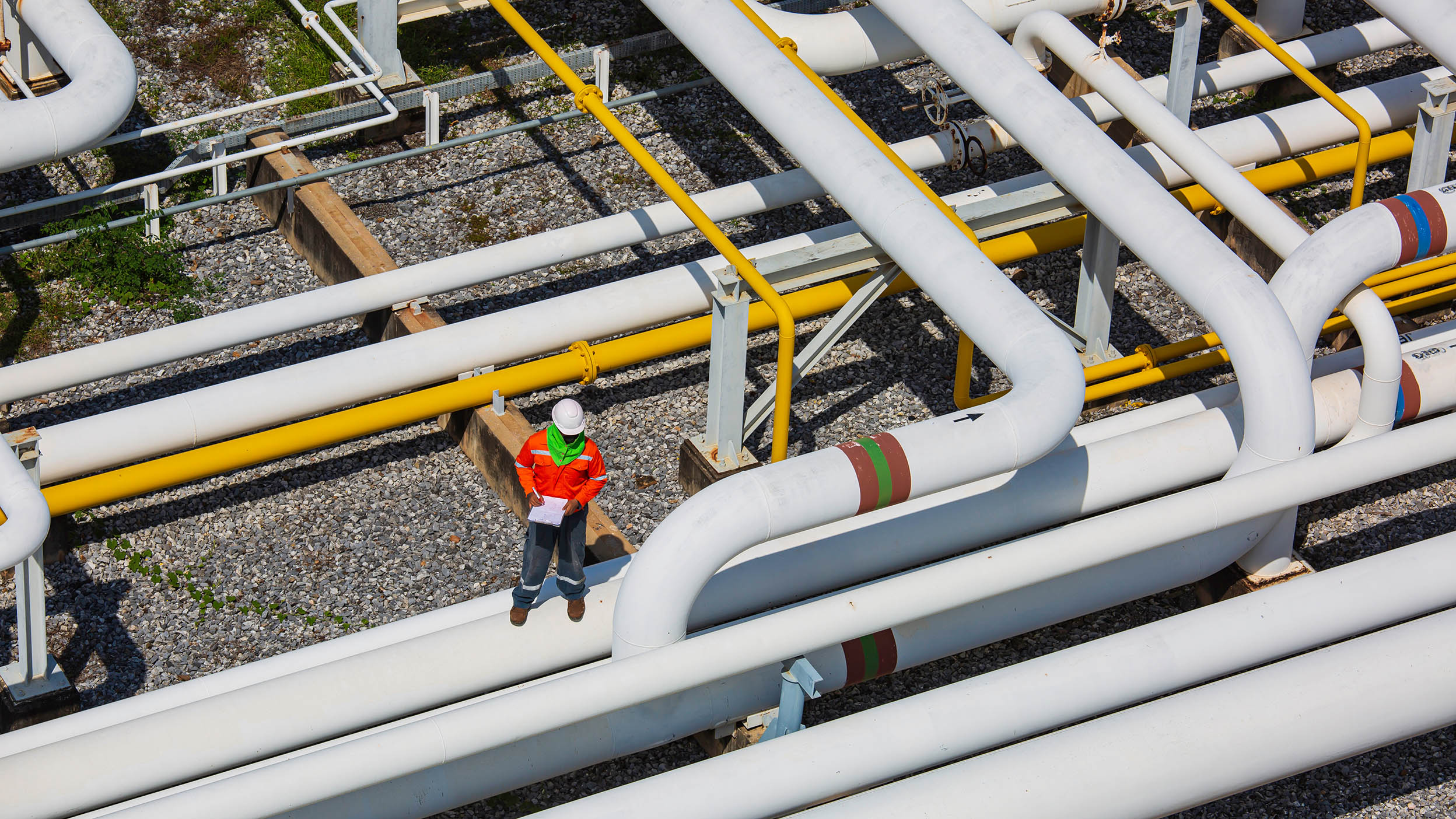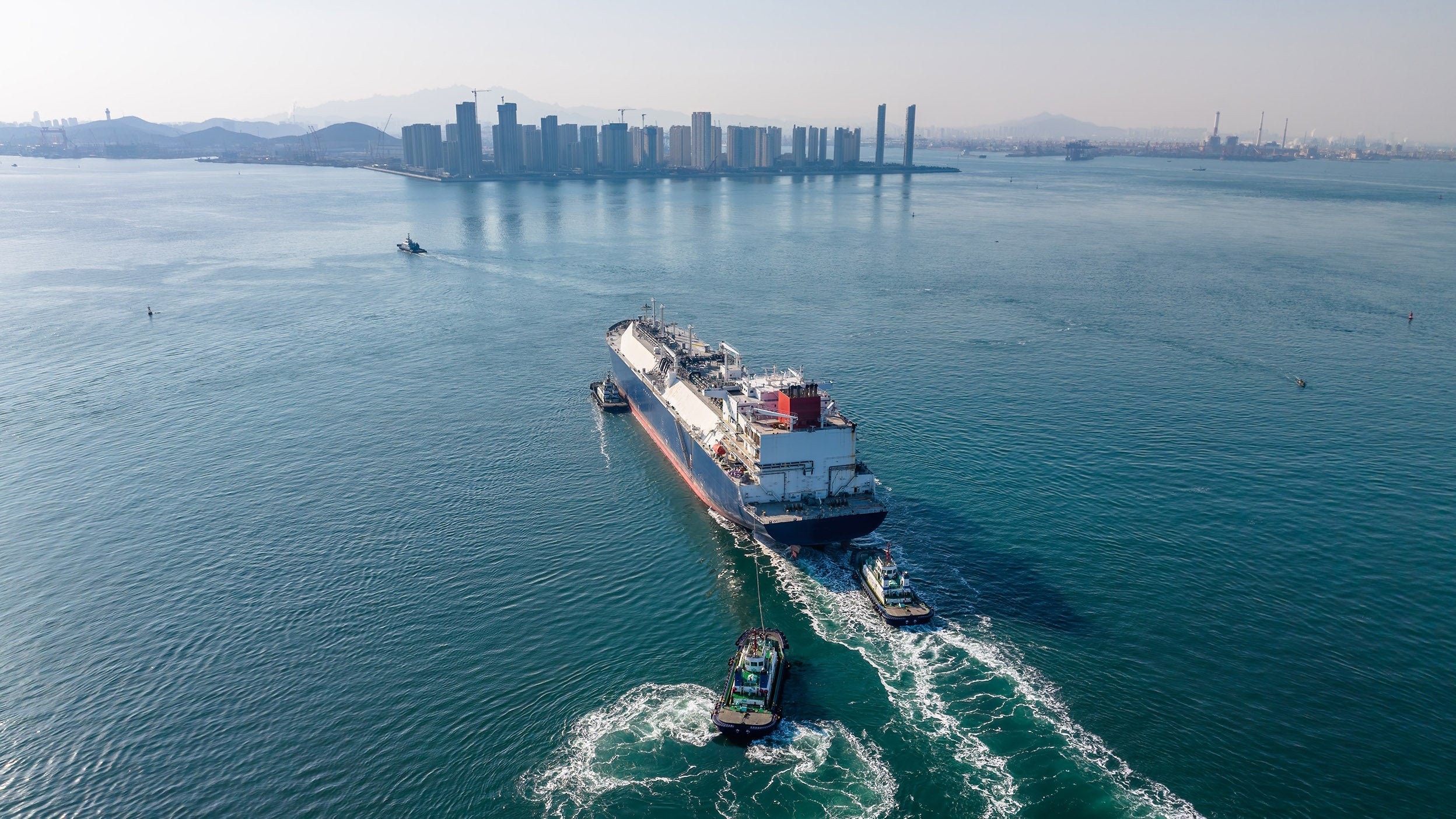
Alternatives SteelPath commentary on the midstream energy infrastructure industry
Get monthly insight from the Invesco SteelPath team on midstream industry happenings, including performance, news, and a chart of the month.

Driven by exports, AI, and coal-to-gas switching, LNG demand is projected to outpace supply by 2035.
Twelve LNG projects under construction and 14 more considered probable should boost US export capacity.
With an improving cash flow and distribution growth outlook, the sector can offer an attractive distribution yield.
Much attention has been paid to the important role natural gas will play in meeting the electricity demand of artificial intelligence (AI) and data centers. (Read: Midstream growth outlook: Increasing natural gas demand.) Another driver of increasing natural gas demand – potentially the largest -- is natural gas exports. Last year, we expected liquified natural gas (LNG) exports to increase natural gas demand by 11-12 bcf/d by 2030, with more to come.1 With the contracting activity since, we can now confirm that LNG exports will continue beyond 2030 and meaningfully so.
The US is the largest exporter of LNG in the world. It moved 11.9 billion cubic feet per day (Bcf/d), mostly to Asia and Europe, in 2024.2 For perspective, the US consumed 90 Bcf/d of natural gas, excluding exports, in 2024.3 The 11-12 bcf/d increase in demand through 2030 is supported by the 12 LNG export projects currently under construction.4 There has also been a significant increase in LNG contracting activity, with more than 3.0 Bcf/d of contracts signed and another 1.7 Bcf/d under consideration.5, 6, 7, 8, 9, 10 Some of these will support the projects under construction, but also the 14 LNG projects that are considered “probable” but haven’t reached a final investment decision (FID). They could provide an additional 17 Bcf/d of export capacity.
The US is likely to see a decade-long step up in power demand. It’s a global phenomenon, too. In 2024, data centers consumed 373 terawatt-hours of electricity globally, with 38% of that from the US. By 2035, it’s expected that data centers will consume 1,596 terawatt-hours of electricity.11 This quadrupling in demand is estimated to be mostly powered by natural gas, with a twelvefold growth in global combined cycle gas turbine and gas peaker demand from 2025 to 2035.11
In fact, despite the substantial growth in US LNG export capacity, it’s likely that demand will outpace supply in the next decade, based on operating and under-construction LNG facilities.12 While power generation demand plays a large role in this estimate, demand is also being driven by global switching from coal to gas, increasing use of natural gas for transportation in shipping and trucking, and, increasingly, industrialization.
The US can support this magnitude of LNG growth for two reasons. First, since 2011, it has been the largest producer of natural gas in the world. In 2023, it produced nearly double the natural gas of its closest competitor, Russia.13 Second, the US has the existing midstream infrastructure and the capability to build more facilities to meet the growing global demand.
Almost all of the currently operating and under-construction US LNG export facilities are along the Texas Gulf Coast and in Louisiana. While there’s existing significant natural gas infrastructure there, more pipelines are needed to move natural gas from the Permian Basin, Haynesville Shale, and other shale basins to meet the area’s natural gas needs. These recently completed or currently under construction pipelines are expected to move more than 13 Bcf/d of natural gas and help meet the demand:
LNG demand-pull will benefit more than just the large, long-distance pipelines. The entire midstream logistics chain from wellhead gathering to processing, treating, compression, and storage is required to complete the movement of natural gas from producing basins to facilities. To meet this demand, new assets will need to be constructed. Even better, in some cases, existing assets with spare capacity may benefit from new capital. The growing LNG-driven demand should be healthy for many midstream providers.
The midstream sector offers investors an attractive distribution yield and an improving outlook for cash flow and distribution growth, in our view. These fundamentals are supported by our expectation of significant natural gas volume growth for many years. Roughly 75% of the midstream sector is focused on natural gas production.14 Plus, natural gas demand appears set to potentially grow 25%–34% by the end of the decade, along with growing visibility into an additional 10% of demand growth from recent LNG commitments.15
While US natural gas demand experienced significant growth over the previous two decades, today’s demand growth is remarkable for its visibility and that it’s occurring in an environment of upstream and midstream capital discipline. As a result, we believe today’s natural demand growth may be particularly healthy for midstream investors.

Get monthly insight from the Invesco SteelPath team on midstream industry happenings, including performance, news, and a chart of the month.

Learn more about private markets, how they’ve evolved overtime, and reasons to invest in private markets

Discover the fundamentals of a 1031 exchange with five short videos. Learn key concepts and components to potentially help support and educate clients regarding these transactions.
Important information
NA4937920
Image: Cheunghyo / Getty
This does not constitute a recommendation of any investment strategy or product for a particular investor. Investors should consult a financial professional before making any investment decisions.
Forward-looking statements are not guarantees of future results. They involve risks, uncertainties, and assumptions; there can be no assurance that actual results will not differ materially from expectations.
Most MLPs operate in the energy sector and are subject to the risks generally applicable to companies in that sector, including commodity pricing risk, supply and demand risk, depletion risk, and exploration risk. MLPs are also subject to the risk that regulatory or legislative changes could eliminate the tax benefits enjoyed by MLPs, which could have a negative impact on the after-tax income available for distribution by the MLPs and/or the value of the portfolio’s investments. Although the characteristics of MLPs closely resemble a traditional limited partnership, a major difference is that MLPs may trade on a public exchange or in the over-the-counter market. Although this provides a certain amount of liquidity, MLP interests may be less liquid and subject to more abrupt or erratic price movements than conventional publicly traded securities. The risks of investing in an MLP are similar to those of investing in a partnership and include more flexible governance structures, which could result in less protection for investors than investments in a corporation. MLPs are generally considered interest-rate sensitive investments. During periods of interest rate volatility, these investments may not provide attractive returns.
Energy infrastructure MLPs are subject to a variety of industry-specific risk factors that may adversely affect their business or operations, including those due to commodity production, volumes, commodity prices, weather conditions, terrorist attacks, etc. They are also subject to significant federal, state, and local government regulation.
The opinions referenced above are those of the author as of September 19, 2025. These comments should not be construed as recommendations, but as an illustration of broader themes. The opinions are based on current market conditions and are subject to change. They may differ from those of other Invesco investment professionals.
This link takes you to a site not affiliated with Invesco. The site is for informational purposes only. Invesco does not guarantee nor take any responsibility for any of the content.